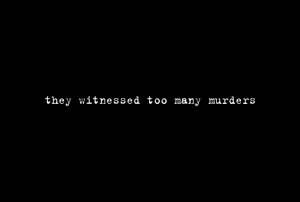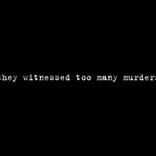One of the most provocative works in the current Fotofest biennial uses the medium of photography — light — to sculpt a scenario detailing the impact, for good and ill, of one powerful photographic image. Throughout his career Alfredo Jaar has questioned the nature of photographic information, often by positioning images so that the very act of looking at them raises questions. His sculptural installation Sound of Silence, at DiverseWorks, adopts a strategy of withholding to both humanize an image's power and to raise troubling questions about its content, its impact, and who controls it.
What remains unseen for almost all of the Sound of Silence is Kevin Carter's Pulitzer Prize-winning image of a young victim of the 1990s Sudanese famine. Visitors to the exhibition first see a very large metal-clad box. At one end, a bank of 10-foot high industrial daylight fluorescents projects an austere verticality, emitting a rancid glow that illuminates the black-painted gallery walls. Entrance to Jaar's box is afforded on the opposite, darker side, where you receive your first instance of image control. Unlike most video artists, who assert no mandate for the dedicated attentions of their audiences, Jaar does not want viewers ambling in and out of his piece. The box uses light to assert when it is time to wait (a horizontal bank of red LED lights) and when to enter (horizontal red switches to vertical green). As viewers assemble outside, the social dynamic that sets in is both anticipatory and slightly nervous, with those waiting making small talk like airplane passengers waiting for their encounter with the metal detector.
Admittance leads to a small room with three benches and a screen projecting a gray scale and a countdown ticker. This arena creates a contextual “we,” a group much larger than Kevin Carter's one-on-one encounter with his subject, and very much smaller than the audience of millions who saw his image after it was published in the New York Times and republished in other forums. Sound of Silence begins as a simple text progression. Words, presented in an approximation of old-style typewriter font, mix the rhythms of poetry, news reportage, and prayer. Composed of white light, the text pulses, surges and recedes, like a tidal force of nature, or like the cadences of a human voice, so that
Kevin
gives way to
Kevin Carter
which is succeeded by the details of his life that led to the making of this image. Among many other things, they include his birth in apartheid South Africa in 1960; his army service, desertion, and attempted suicide before return to army service; his introduction to photography and his evolution into a photojournalist; his membership in a tightly-knit group of photojournalists known as the Bang-Bang Club. Jaar keeps reminding you that this is more than biography by introducing each segment with
Kevin
Kevin Carter
so that by the time we encounter him, waiting for the moment of photographic completion before a vulture and a starving young girl in the Sudan desert, we feel that we are looking over his shoulder. At this point in the narrative the image arrives, apocalyptic in both its imagery and in Jaar's presentation of it.
Carter epitomizes the journalist's dilemma: to record the story means getting close to the story, but to record the story means maintaining objectivity, and maintaining objectivity inevitably means violating your morals. Carter's photograph was purchased by the New York Times in March 1993, and its success was his undoing. He struggled to retain his compass in the face of extreme criticism ("The man adjusting his lens to take just the right frame of her suffering might just as well be a predator, another vulture on the scene."). He won the Pulitzer Prize in 1994, and committed suicide later that same year.
Jaar could have ended his story here, leaving us to wonder why Carter, who, after all, was no stranger to controversy, violence, or encounters with death (he was the first to document a public execution by necklacing), chose not to go on living. But as intimate as we become with them it seems that neither Carter nor the starving Sudanese child are the central characters in Jaar's narrative. As the text continues to surge and recede, we learn of the declension of the photograph's ownership and reproduction rights after Kevin Carter's death, to its current management by
Corbis, a corporation owned by Bill Gates.
Like all of Jaar's work, Sound of Silence is undergirded by a series of pointed assertions, but unlike the more conventional poetic techniques of his recent film Muxima , Sound of Silence (which was created in 1995 and is being presented here for the first time) uses strategies of dominance to question who controls the content and power of a photographic image. Withholding the image while telling its story heightens its power, but this would be merely a very successful theatrical tactic if Jaar had not so meticulously laid out light as his unifying theme, so that the Sound of Silence illustrates a pungent philosophical theorem: All information is light, therefore light is life, and control of light is control of life.
Image courtesy FotoFest
Christopher French is an artist and writer living in Houston.




